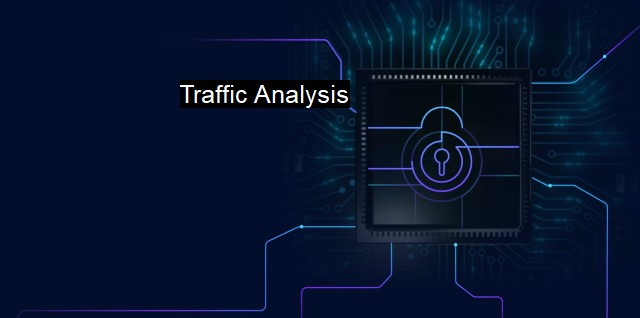What are Traffic Analysis?
Exploring Traffic Analysis in Cybersecurity: Techniques, Tools and Benefits for Secure Networks and Systems
Traffic analysis, in the context of cybersecurity, refers to the process of examining network traffic to identify patterns, trends, and anomalies that could signal potential security threats. This technique is commonly used by antivirus software and other security solutions to detect and prevent attacks on computer systems, networks, and data.At its core, traffic analysis involves the capture, storage, and analysis of data packets as they flow between network nodes. Security professionals use various tools and techniques to monitor network traffic, including packet sniffers, protocol analyzers, intrusion detection systems, and other specialized software.
By capturing and analyzing network traffic, security professionals can identify unusual patterns or behaviors that may indicate malicious activity. traffic analysis can be used to detect a malware infection by identifying network traffic that matches a known malware signature or behavior. It can also be used to identify potential network-based attacks, such as privilege escalation attempts, port scanning, or denial-of-service attacks.
One of the primary benefits of traffic analysis is its ability to detect attacks in real-time. This allows security professionals to respond quickly to threats, minimizing the potential impact of an attack and reducing downtime. traffic analysis can be used to identify the source of an attack, which can help security team to take appropriate actions against the attacker and prevent further attacks in the future.
To be effective, traffic analysis requires an in-depth understanding of network protocols and common attack trends. This can be challenging, as attackers are constantly developing new strategies and techniques to bypass security measures and evade detection. To stay up-to-date with the latest trends and threats, security professionals must maintain a high level of knowledge and expertise through ongoing training and education.
traffic analysis is an essential component of modern cybersecurity and antivirus solutions. By using this technique, security professionals can better protect networks, systems, and data from potential threats, ensuring that businesses and individuals remain safe and secure in an increasingly complex digital landscape.

Traffic Analysis FAQs
What is traffic analysis in cybersecurity?
Traffic analysis is the process of monitoring and analyzing network traffic to gather information about network communications, identify patterns, and detect suspicious activities that may indicate a cybersecurity risk.What are the benefits of traffic analysis in cybersecurity?
Traffic analysis helps organizations to identify potential cyber attacks, detect anomalies and prevent them from spreading, as well as to optimize network performance and proactively manage network resources.How can antivirus software use traffic analysis to protect against cyber threats?
Antivirus software uses traffic analysis to monitor network traffic and detect known malware signatures and suspicious network behavior. In addition, it can also identify and block malicious traffic before it reaches its target, preventing cyber attacks from being successful.What are some common methods used in traffic analysis for cybersecurity?
Some common methods used in traffic analysis for cybersecurity include packet sniffing, deep packet inspection, flow analysis, and log file analysis. These techniques provide insight into network traffic behavior, which can be used to identify patterns and anomalies, and to detect and mitigate potential cyber threats.| | A | | | B | | | C | | | D | | | E | | | F | | | G | | | H | | | I | | | J | | | K | | | L | | | M | |
| | N | | | O | | | P | | | Q | | | R | | | S | | | T | | | U | | | V | | | W | | | X | | | Y | | | Z | |
| | 1 | | | 2 | | | 3 | | | 4 | | | 7 | | | 8 | | |||||||